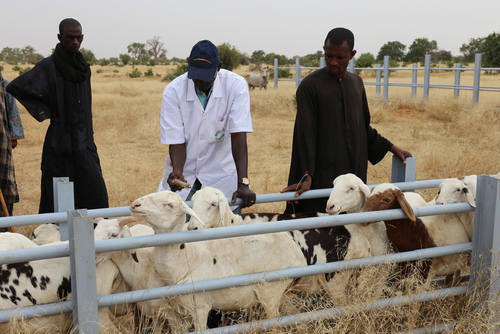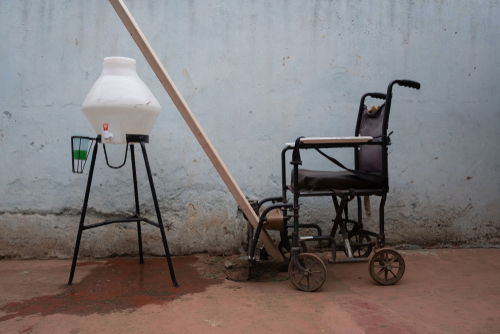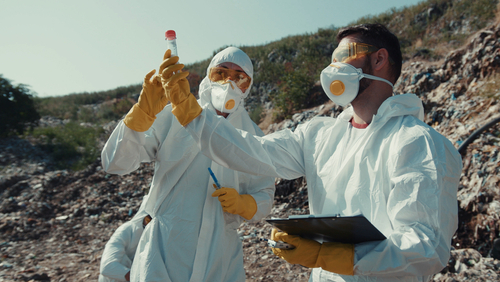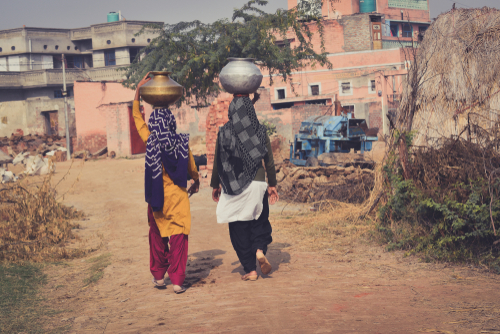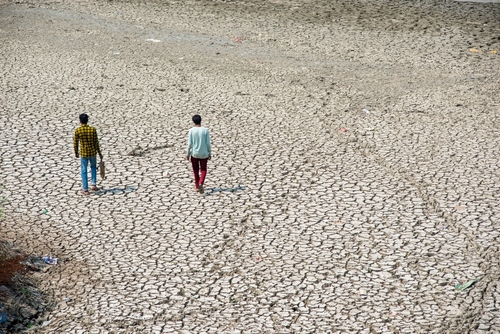June 26, 2023

Many unsupervised deaths during pandemic lockdowns in India could be attributed to undiagnosed COVID-19 cases.
Collaborative OHT research probed the causes of medically unsupervised deaths during COVID-19 lockdowns in the south Indian city of Madurai. Between March 2020 and July 2021, all-cause deaths in Madurai exceeded expected levels by nearly one-third. While these excess deaths were attributed to cardiovascular or cerebrovascular conditions, diabetes, and senility, they aligned temporally with peaks in COVID-19 cases, suggesting they could likely be attributed to fatal COVID-19 infections or associated medical care disruptions. Further efforts to reconcile COVID-19 deaths with all-cause excess mortality and cause-specific mortality necessitates enhanced surveillance and diagnostic capacity, especially in low- and middle-income countries (LMICs). [Nature Communications]
Discrepant findings from early antibiotic discontinuation in patients with culture-negative serious infections.
Collaborative OHT analysis shows that early discontinuation – three to four days after initiation versus 5 days or more- of antibiotic treatment of US patients admitted with culture-negative serious infection (CNSI), was not associated with higher odds of mortality overall. However, after controlling for selection biases, the association between early antibiotic discontinuation and mortality appeared detrimental or protective. While this study is the largest hypothesis-generating study of its type, the authors emphasize the limitations of the observational study design in assessing early antibiotic cessation in hospitalized patients with serious infections and the need for randomized, controlled trials to account for confounding factors. [Open Forum Infectious Diseases]
Middle-income countries bear the greatest burden of hospital-associated drug-resistant infections worldwide.
OHT researchers and collaborators estimated the global prevalence of hospital-associated drug-resistant infections (HARIs) caused by high-priority pathogens – including Escherichia coli, Acinetobacter spp., and Klebsiella spp. – using data from point-prevalence surveys conducted in 99 countries between 2010 and 2020. The global burden of HARIs was estimated to be 136 million, with the most significantly impacted countries being China (52 million), Pakistan (10 million), and India (9 million). Middle-income countries generally faced the greatest burden of HARIs compared to low- and high-income countries. [PLOS Medicine]
Indian women in the global health workforce face unique familial and societal pressures.
Researchers investigated the enablers and barriers faced by female public health leaders through surveys and interviews of mid-career women from India, Uganda, Kenya, Rwanda, US, and Canada in the fields of global and public health. Participants from all six countries generally emphasized the importance of mentorship and networking to their professional growth. Indian women reported facing overt gender biases in the workplace compared to North American women who experienced more implicitly biased responses from global health colleagues. Family influences and societal norms also had significantly greater influences on Indian women and their career choices. The study’s findings demonstrate that while some barriers women face in global health are universal, cultural context affects the relationship between gender bias and women’s health leadership. [The Lancet Regional Health – Southeast Asia]
Nursing home employees are exposed to significant concentrations of bacteria at work.
Researchers assessed microbial exposure in five nursing homes in Denmark and explored bacterial and fungal concentrations and levels of antimicrobial resistance (AMR) in Aspergillus fumigatus isolates. Average bacterial exposure concentrations ranged from 1,000 cfu/m3 to 2,500-3,000 cfu/m3, depending on employees’ typical tasks. Those with more direct contact with nursing home residents had greater microbial exposure. Fungal exposure was relatively low and comparable to outdoor levels in the studied nursing homes, and only 1 out of 40 A. fumigatus isolates displayed multidrug resistance. [Annals of Work Exposures and Health]
Placebo-controlled trial reveals safety and high efficacy of new chikungunya vaccine.
A double-blind, randomized phase 3 trial measured the safety and immunogenicity of a single-shot live-attenuated chikungunya vaccine, or VLA1533. After a single vaccination with VLA1533, approximately 99 percent of participants demonstrated seroprotective levels of chikungunya virus-neutralizing antibodies 28 days post-vaccination. The vaccine was also shown to be generally safe, with serious adverse events reported in only 1.5 percent of participants who received VLA1533, compared to 0.8 percent in placebo participants. Overall, the strong immune response and seroprotection induced in almost all treatment participants indicate the effectiveness of VLA1533 against chikungunya. [The Lancet]
Farm-to-farm transmission of ESBL-producing E. coli observed in epidemiological analysis.
Whole-genome sequencing (WGS) was used to analyze the resistance phenotypes of various antimicrobial drugs and to understand the molecular epidemiology of ESBL-producing Escherichia coli in the livestock and meat sector in the European Union. Of 338 ESBL/AmpC-producing E. coli isolates collected from cecal and fecal samples, all were resistant to cefotaxime and ampicillin, 5.6 percent to ertapenem, and 84.9 percent to three or more antibiotic classes. Epidemiological analysis revealed clonal transmission of ESBL/AmpC-producing E. coli, indicating that these bacteria circulate among farms in the livestock sector. Infection prevention and control measures in the EU should target interactions between farms to disrupt this common E. coli transmission route. [Journal of Antimicrobial Chemotherapy]
Indoor air pollution from burning biomass fuels linked to respiratory disease in women in Ethiopia.
A community-based, cross-sectional study conducted in Ethiopia identified factors such as the use of charcoal or other biomass fuel for cooking, unimproved floors, traditional stoves, soot deposits in the ceiling, cooking duration, and the absence of a window in the kitchen to be strongly associated with respiratory symptoms in women, including coughing, wheezing, and runny nose. Indoor air pollution is responsible for almost four million premature deaths per year, primarily in low- and middle-income countries, and disproportionately affects women who are mainly responsible for cooking. Awareness campaigns on the harmful effects of indoor air pollution and switching to improved stoves and low-emission fuels should be pursued to improve women’s respiratory health. [BMJ Open]
Environmental stewardship practices of Indigenous Peoples should inform the global response to the climate and biodiversity crisis.
The United Nations Declaration on the Rights of Indigenous Peoples (UNDRIP) recognizes the land and cultural rights of Indigenous Peoples to self-determination in economic, social, and cultural development including the right to a clean, healthy, and sustainable environment. Mounting evidence demonstrates that traditional land management practices employed by Indigenous Peoples around the world are more effective at climate change mitigation and biodiversity conservation than even some green economies. The Intergovernmental Panel on Climate Change declared that historical patterns of inequity, including colonialism, contribute to climate change and biodiversity loss. Indigenous Peoples people should be included in biodiversity and climate negotiations in order to promote a clean, healthy, and sustainable environment for all. [PLOS Global Public Health]
Image from Canva

